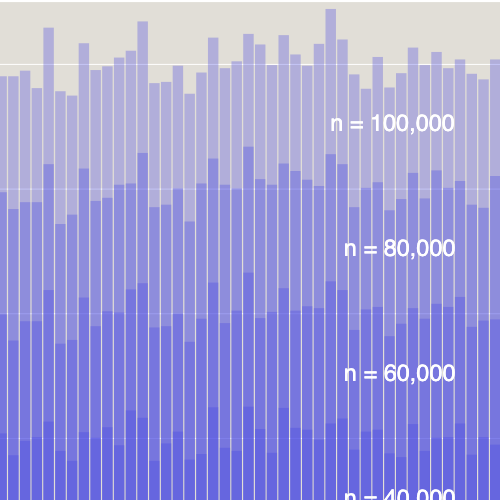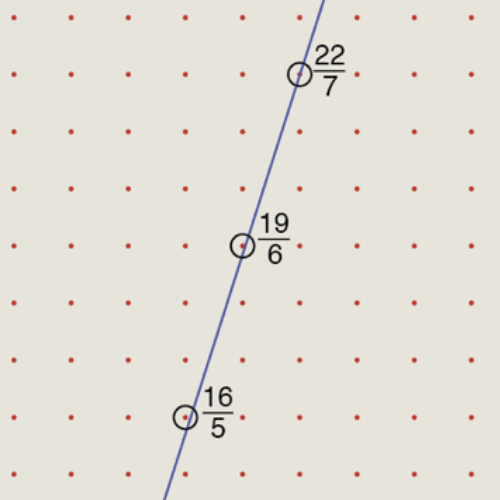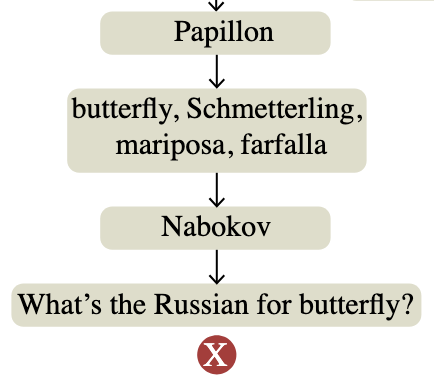Jacobsthal Numbers, Part 3
by Brian Hayes
Published 11 December 2006
Our story so far: Having stumbled upon the Jacobsthal numbers, 1, 3, 5, 11, 21, 43, 85, 171, 341,…, I idly asked, “Who was Jacobsthal?” Keith Matthews promptly responded with a wealth of biographical information, even arranging to have an obituary translated from the Norwegian. So I asked, “Where did Jacobsthal mention these numbers?” and Barry Cipra quickly supplied a reference: “Fibonaccische Polynome und Kreisteilungsgleichungen” in Sitzungsberichte der Berliner Mathematischen Gesellschaft 17 (1919-1920), 43-57.
I dare not ask another question, lest someone else go running off to do more of my library errands for me. Embarrassing.
Unfortunately, though, when I look into the Jacobsthal paper, further questions are inescapable. Nowhere in the article, as far as I can tell, does Jacobsthal list any of the numbers in the sequence that now bears his name. Admittedly, I don’t actually read German; I just make it up as I go along. But, ungebildet as I am, I can at least recognize numerals, and 1, 3, 5, 11, etc. are not to be found. The closest approach is in this passage:

Here we see the recurrence relation f(n+1) = f(n) + xf(n–1), which produces the Jacobsthal sequence in the case when x = 2. But nowhere does Jacobsthal mention the specific case of x = 2, or any other specific example for that matter, except for noting that x = 1 corresponds to the “so-called” Fibonacci numbers.
So once again I’m left wondering: Exactly how did Jacobsthal’s name get attached to the numbers 1, 3, 5, 11, 21, 43…?
Incidentally, Google Language Tools offers a wonderful translation of Jacobsthal’s title: “Fibonacci polynomials and circling hurrying equations.”
Responses from readers:
Please note: The bit-player website is no longer equipped to accept and publish comments from readers, but the author is still eager to hear from you. Send comments, criticism, compliments, or corrections to brian@bit-player.org.
Publication history
First publication: 11 December 2006
Converted to Eleventy framework: 22 April 2025




I see you need someone to do your legwork again. OK, here goes.
The earliest use of the phrase “Jacobsthal numbers” I could find was in another paper by Horadam, “Jacobsthal and Pell Curves,” in The Fibonacci Quarterly 26 (1988), 77-83. This paper also cites the original paper by Jacobsthal. (The Jacobsthal paper is also cited in a paper by Bergum, Bennett, Horadam and Moore, “Jacobsthal Polynomials and a Conjecture Concerning Fibonacci-like Matrices,” in FQ 23 (1985), 240-248, with a nice historical note.)
Prior to the Horadam paper, there are numerous appearances of the phrase “Jacobsthal polynomials” (the earliest I could find is by Hoggatt and Bicknell, in “Convolution Triangles,” FQ 10 (1972), 599-608), but none of the papers I’ve looked at is clearly the Ur-spring for the terminology. The sequence 1,3,5,11,21,… even shows up in some of these papers, but is not singled out or named. Curiously, the sequence is explicitly studied, but not named (nor Jacobsthal even mentioned), in another FQ (1972) paper by Hoggatt and two other co-authors, one issue earlier than the Hoggatt/Bicknell paper. The first appearance of the sequence in connection with Jacobsthal polynomials is in an FQ (1978) paper by Hoggatt and Bicknell (by then Bicknell-Johnson), where it’s part of an array of numbers.
Unfortunately FQ is not part of JSTOR (although it does have its own online index), so it’s hard to be sure I haven’t missed something. (JSTOR has nothing to offer under either “Jacobsthal number” or “Jacobsthal polynomial.” MathSciNet returns nothing earlier than 1978.) I’m afraid this is the best I can do for now.